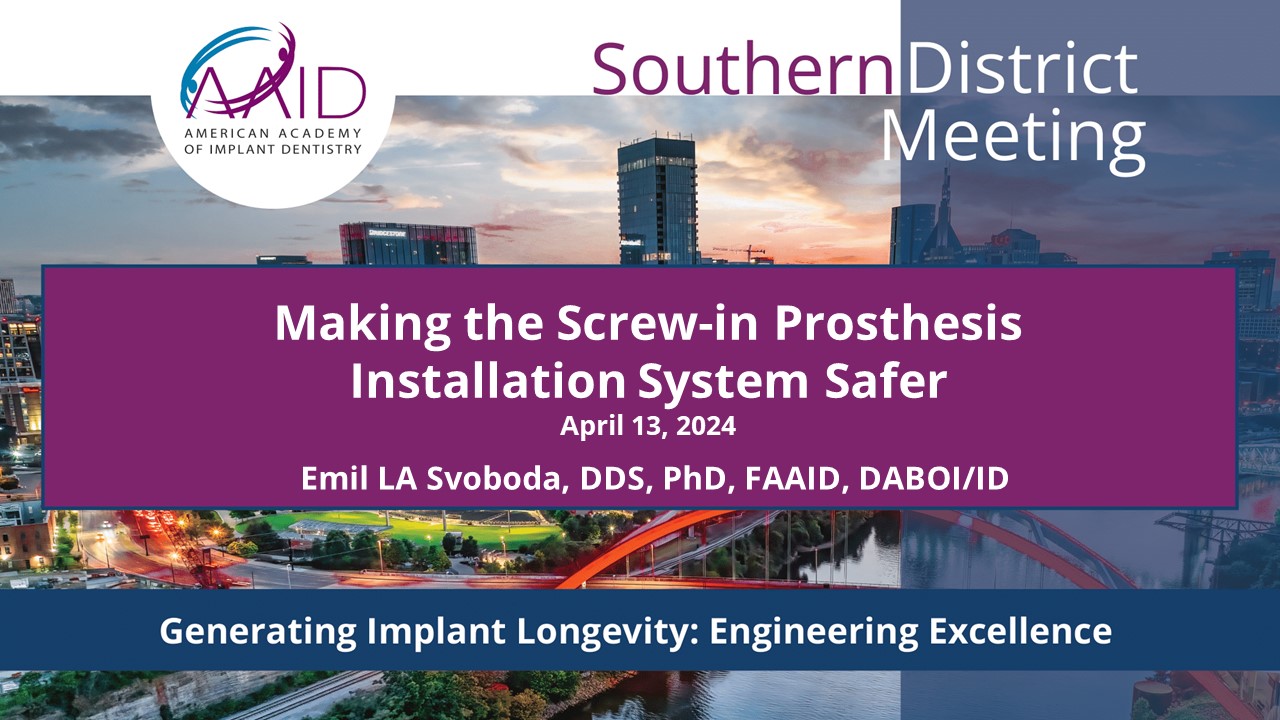
Making the Screw-in Prosthesis Installation System Safer
Abstract: There is a growing concern regarding the mechanical and biological failure of dental implants and their attached prosthetics.
Identifying the root causes of treatment complications is essential to mitigating their harmful effects. The root causes of treatment complications are primarily mechanical and, fortunately, under the control of dentists. Dr. Svoboda proposes that implant manufacturers and sellers should provide dentists with relevant technical information regarding the fit-tolerances of their implants and connecting parts so dentists have some rational means of purchasing the best products for their patients. Manufacturers must also provide dentists with installation instructions that include their inherent risk factors for complications and that their CAD/CAM-related products give dentists more control over efficiently customizable features that can make treatment safer for patients. Unfortunately, current features embed legacy prosthetic designs that are known to expose patients to several known risk factors for peri-implant disease and treatment failure. The author demonstrates how following two rules can make legacy installation systems safer and how the Reverse Margin System can also make treatment more straightforward for the dentist.
Citation: Svoboda ELA. Making the Screw-in Prosthesis Installation System Safer.
Presented April 13, 2024 at AAID Southern District Meeting Slides 1-82. Also at https://reversemargin.com/articles-research/


Sorry, the comment form is closed at this time.